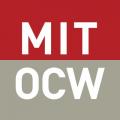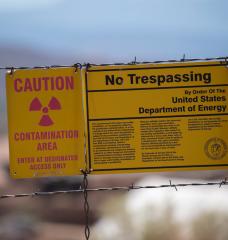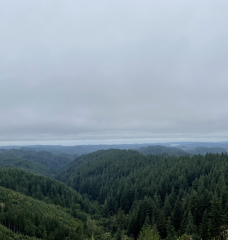Description
For urban planning Professor David Hsu, climate mitigation starts with communities.
Paradoxically, David Hsu doesn’t consider himself a “city person,” but he has great appreciation and enthusiasm for cities as places where meaningful steps can be taken toward climate mitigation. In this episode, Prof. Hsu explains that urban planners can help move cities to take action to reduce the amount of greenhouse gas emissions from the construction, heating, power, and transport sectors. But he observes that the most lasting and successful actions are ones that are implemented democratically, with the consent and participation of the affected communities. To win over those communities, he says, technical experts have to learn to communicate solid facts using math that even a layperson can follow. And they need to learn that sometimes there can be more than one defensible position in response to a given problem—which is why Prof. Hsu often asks his students to read multiple papers that take conflicting positions on a particular problem, and to evaluate which paper’s (or papers’) arguments are more persuasive. Because in the end, it’s people who need to be persuaded to take action against climate change—solutions won’t implement themselves.
Learn more at Professor David Hsu's 11.165J Urban Energy Systems and Policy on MIT OpenCourseWare
Transcript
MUSIC PLAYING] SARAH HANSEN: Today on Chalk Radio, helping students re-imagine cities.
DAVID HSU: I really-- I think, more than some environmental analysts or academics, I guess I really do believe in the potential for people's behavior change to have an impact on total climate emissions or total climate change.
SARAH HANSEN: For this episode, I sat down with Professor David Hsu, instructor for course 11.165, Urban Energy Systems and Policy, here at MIT.
DAVID HSU: I study how cities relate to the environment. And I guess, most recently, I've been studying, in a number of areas, kind of the spaces in which cities can act on climate change.
SARAH HANSEN: Before delving too deeply into this course, I wanted to talk to David a bit about urban planning, a major and a department here at MIT that David co-chairs. Interestingly enough, our urban expert guest doesn't even really consider himself a city person.
DAVID HSU: I don't naturally feel like a city dweller as much as somebody who just happens to like nature, happens to live in the city. But also, I think studying how cities could be healthier and cleaner and more environmentally friendly always just felt very natural to me because, in some ways, I love cities. I lived in a bunch of cities. I've lived in, I think, 10 cities since I went off to college.
I actually worked for about a decade. And I worked in engineering for a while, and I worked in finance for a while. And I worked in city government for a while in New York and then Seattle. And I always tell my students that I didn't know that engineering plus finance plus government was urban planning.
SARAH HANSEN: And for David, you might add climate change to that formula. Much of his research and courses take a climate change angle on urban planning, and all of his work comes down to the most basic ingredient of any community-- people.
I think what I find so interesting about your work is just how it comes down to the person. It seems like you're really interested in how people themselves in communities interact with the cities and the infrastructure and how they can impact climate change.
DAVID HSU: I guess I really do believe in the potential for people's behavior change to have an impact on total climate emissions or total climate change. But also, I think, maybe in a small d democratic sense that I really think that democratic solutions are going to be the ones that are going to be most lasting. If you are good at something but you don't like doing it, how long are you really going to do it for?
And similarly, if we think we have technological solutions for climate change, if we don't arrive at them in democratic means and equitable ways or just ways, how long are those solutions really going to last? And are we going to really see them through at the timescales we need?
SARAH HANSEN: These are exactly the kinds of questions posed in David's course. In it, he invites students to think about climate change and urban planning by looking at the context that's led our entire planet to where it is today.
DAVID HSU: Frankly, most of our population is located in cities, and having worked in New York City government and having read quite a bit about what urban planners write about cities, I would actually point to a particular kind of complacency or blind spot that we have regarding cities. I think a lot of city policymakers or analysts will point to cities and say, oh, cities actually have lower per capita emissions than rural areas or related areas. And I've always found that to be particularly complacent or a blind spot for a bunch of reasons.
First, we only know that those numbers are true because we only count certain things. We count the greenhouse gas emissions related to transportation and space heating, but we don't always count the greenhouse gas emissions related to electricity coming to cities or food or water or materials like concrete and cement. I think we have to think about climate change worldwide as a heterogeneous problem as big as the world. Greenhouse gas emissions are global. But how we emit them and how we've emitted them historically is wildly, completely inequitably distributed.
SARAH HANSEN: The numbers here are pretty stark. I asked David to give some examples of what this inequitable distribution of emissions really looks like.
DAVID HSU: Poor countries, on a per capita basis, consume vastly less. The US is probably around 15 metric tons of carbon dioxide equivalent per person. Europe and Japan are probably around 10 metric tons. Global average is about 5 metric tons. And in India, it's about 2. And in a place like Kenya, it's less than 1.
And so that's how inequitable the problem is. Like I, as a North American, literally, probably, am responsible for 15 times more of a problem on an annual basis than somebody in Kenya. That's fundamentally inequitable. And if we're looking at a more equitable future, there's really nowhere for us to go but down in our emission of greenhouse gases.
SARAH HANSEN: And this is the message that lies at the crux of David's class. While many cities are focusing on adapting to climate change, creating policies and changes that help them deal with the effects of climate change like heatwaves, flooding, and sea level rise, David's focus is on mitigation or how urban planners can help cities cut down on the problems that are contributing to climate change.
DAVID HSU: Mitigation is, how do we stop creating climate change? And mostly almost exclusively, that's happening through our greenhouse gas emissions. So how do we reduce our greenhouse gas emissions while trying to maintain a standard of living that we all aspire to, whether or not you're in a rich country or poor country? So local governments have a really big role to play.
SARAH HANSEN: One of the things that David does in his class is focus on discussion. So much of the work of an urban planner is about community decision making, and that same spirit exists in the class. In our interview, David mentioned that he makes a concerted effort to equip his students as well as possible for these discussions. And where possible, he brings the simple truth of math to the kinds of human equations that you just might not expect.
DAVID HSU: I try to teach really simple calculations that are simple enough for anyone to access using basically high school level math. And I do that because all of our students-- MIT students are pretty darn good at sophisticated math. But to have a conversation about some of these topics, you just really need simple math. And so we do simple calculations just to establish the scope of the problem. And so we have debates. Like some students will say, I'm vegetarian, but I like to travel. And I'll say, well, it's a pretty simple math problem. We'll just look at the greenhouse gas emissions associated with both activities.
We will look at problems, like I want to focus on electrifying buses. Most places, actually, buses almost always make sense. But electric vehicles, it's OK to be skeptical about electric vehicles in some ways. Electric vehicles solve some problems. They don't solve all problems.
If you're sitting in traffic congestion in an electric vehicle, you're still losing that labor time even if your exhaust emissions have gone down. But air pollution still comes from non-exhaust sources like tire particles. So we'll talk about that just to kind of say, here's all the aspects of the problem. We're not solving the problem, but I actually welcome the students being skeptical because that's how we learn to solve the right problem.
SARAH HANSEN: David explained that readings are really important for a class like this, so he tries to offer readings from various angles on the same subject.
DAVID HSU: So we try to use readings to kind of set the table. And if you give a bunch of students four or five papers-- and I try to give them sometimes conflicting papers so they can sort out which paper they find more appealing to them or which arguments they find more appealing - they can use that process. So we can use it to out which arguments people sympathize with, which ones they disagree with, and, frankly, sometimes both ideas can be right, but they can conflict, and we learn from that too.
SARAH HANSEN: Climate change is big and sweeping and, frankly, terrifying and can make us feel helpless to do anything about it. So David uses his class to empower his students to take action, even in sometimes small, incremental ways.
DAVID HSU: Well, I guess a good thing coming out of climate change is that the problem is so big and the responses are so big that actually I'm kind of excited for my students. I say, whatever interests you have, whatever concern you have, your skill is going to matter. So if you're a software programmer, if you're an accountant, if you're a lawyer, if you're an advertiser, if you're-- whatever you do, I think actually you can contribute to climate change if you care about climate change.
I just think we should welcome everyone to work on climate change and that, if you look around even MIT, the sheer number of people working on different aspects of the problem is really heartening. And so I always say to students, find your spot. Find the thing that you're passionate about that you can make a difference on, that you find joy in, and that you think is interesting and exciting.
If you work on that and even if you make a small, incremental improvement-- I always show them how technologies connect. Making a small incremental improvement in one technology can have really important knock-on effects down the road. It's a little bit overwhelming to think about the scale of the problem and trying to feel like you're solving the whole problem. But if you do your part to solve part of the problem, I think we'll solve the problem.
[MUSIC PLAYING]
SARAH HANSEN: That was Professor David Hsu, instructor for course 11.165, Urban Energy Systems and Policy. You can find his teaching materials on our MIT OpenCourseWare website. As always, they are openly licensed, so you can reuse and remix them in your own teaching.
You can help others find the materials, too, by subscribing to the podcast and leaving us a rating and review. Thank you so much for listening. Until next time, signing off from Cambridge, Massachusetts, I'm your host, Sarah Hansen from MIT OpenCourseWare.
MIT Chalk Radio's producers include myself, Brett Paci, and Dave Lishansky. The show notes for this episode were written by Peter Chipman, who also built the course on our website. We're funded by MIT Open Learning and supporters like you.
[MUSIC PLAYING]
Dive Deeper
11.165J Urban Energy Systems and Policy on MIT OpenCourseWare
Credits
Sarah Hansen, host and producer
Brett Paci, producer
Dave Lishansky, producer
Show notes by Peter Chipman






